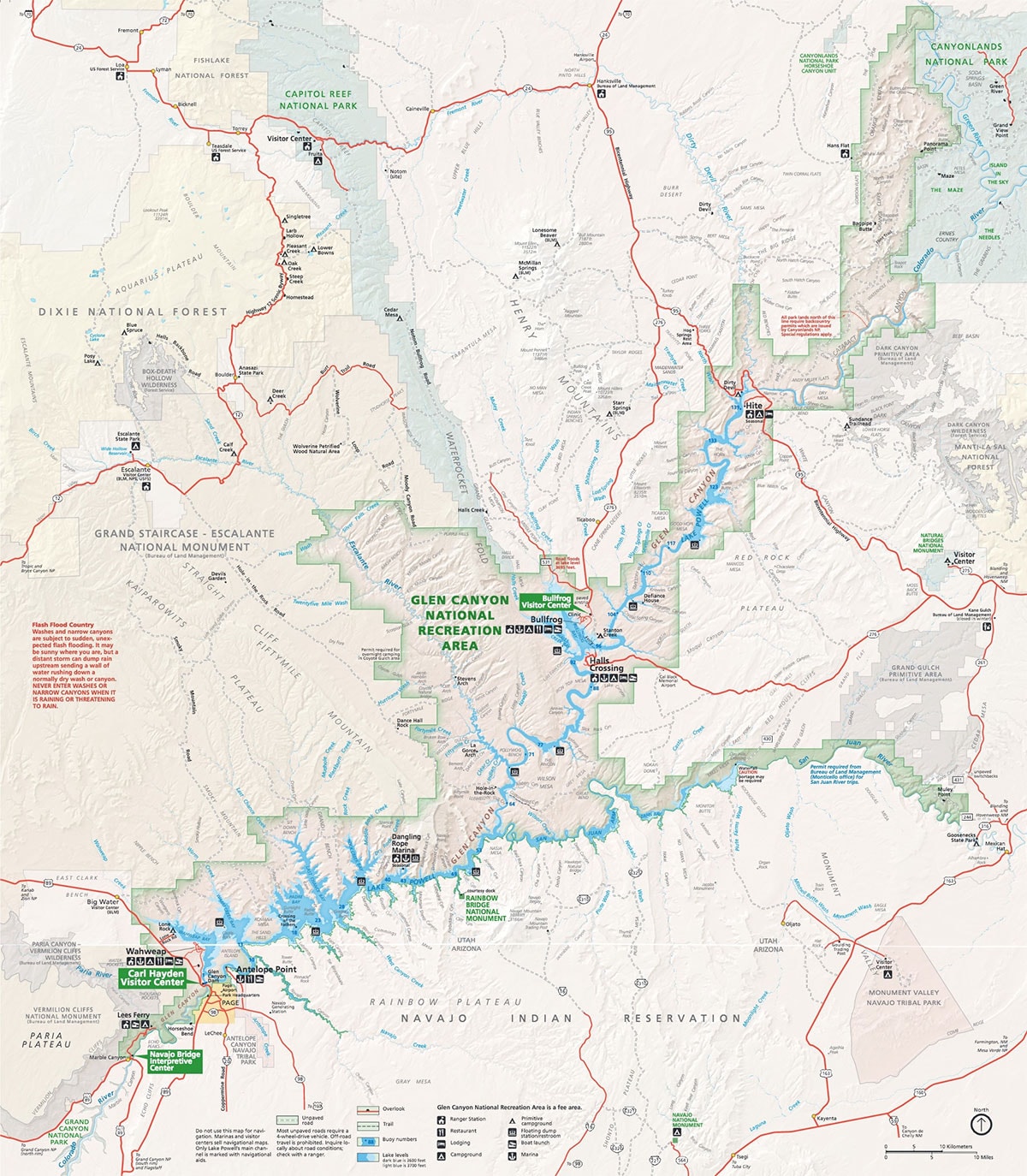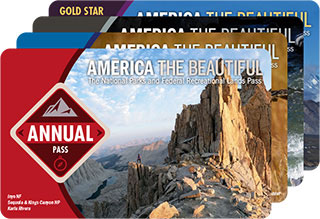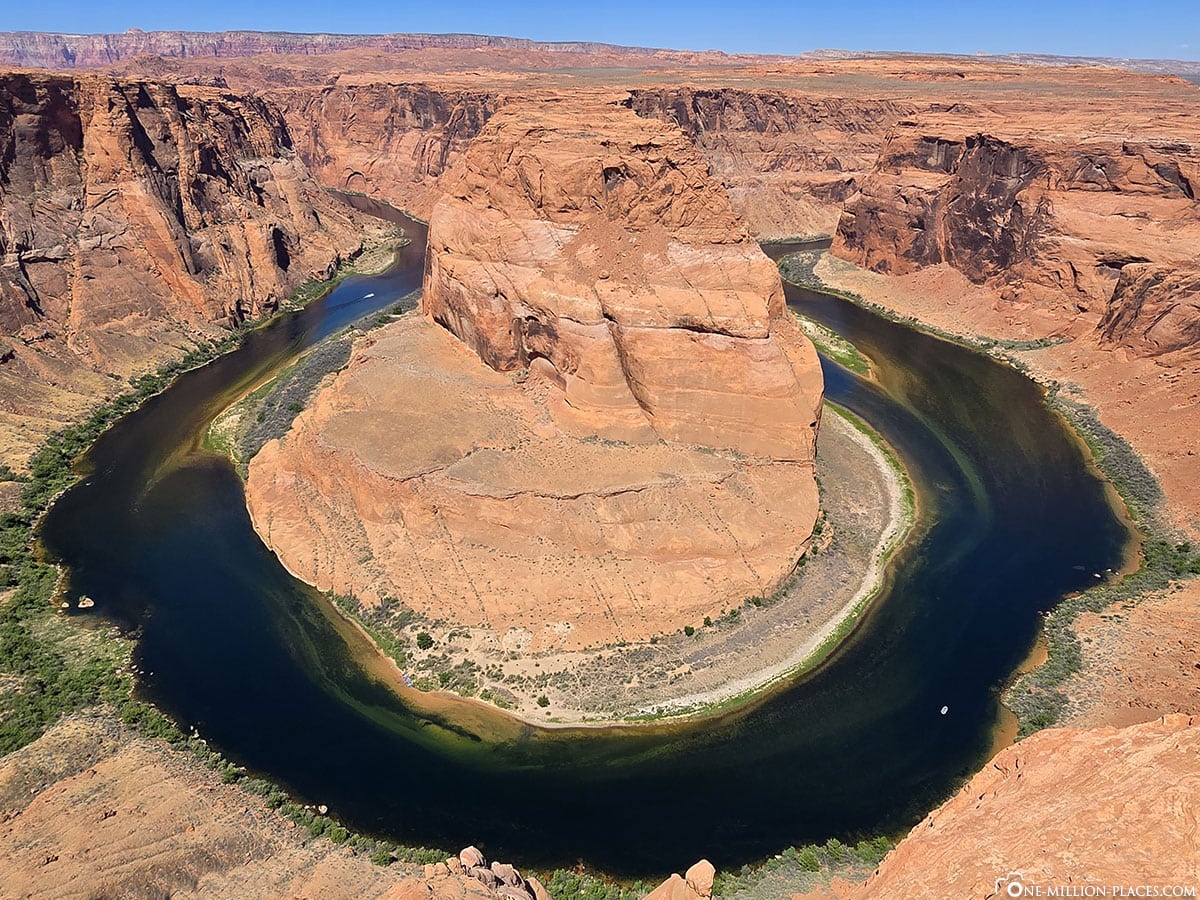After our visit to Monument Valley, the next stop on our route through the Midwest of the USA was the small town of Page in Arizona, as there is a lot to discover here: the beautiful Antelope Canyon, the world-famous Horseshoe Bend and the huge Glen Canyon National Recreation Area with the Glen Canyon Dam.

Table of contents
The town of Page in Arizona
Page is a small town in northern Arizona that was founded in 1957. It was originally built as a labor camp for the construction workers working on Glen Canyon Dam, a gigantic dam that impounds the Colorado River and creates Lake Powell. With the completion of construction work in the 1960s, Page gradually developed into a permanent community. The city’s strategic location on the edge of Lake Powell and close to numerous natural wonders has made it a popular tourist destination over the years.
The town of Page today has about 7,500 residents, making it a relatively small, yet significant community in Coconino County. Despite its small size, Page plays an important role in tourism in the region, as it serves as a starting point for many visitors who want to explore the surrounding natural wonders. Tourism is also an important pillar of the economy in Page, alongside the service sector and the administration of the Glen Canyon National Recreation Area.
Among the most famous attractions around Page are the breathtaking Antelope Canyon, characterized by its narrow, winding rock formations and penetrating light, and Horseshoe Bend, a spectacular loop of the Colorado River. Lake Powell, one of the largest artificial lakes in the USA, also offers numerous opportunities for water sports and outdoor activities. The proximity to the Grand Canyon and Monument Valley also make Page an ideal starting point for nature and adventure lovers.
We stayed for 3 nights at the very well located Hotel Best Western Plus at Lake Powell incl. Family room, breakfast & free parking for 223 EUR per night.
Glen Canyon National Recreation Area
The Glen Canyon National Recreation Area is a huge protected area in northern Arizona and southern Utah that stretches around Lake Powell. It was founded in 1972 to protect the unique landscape and water reservoir of Lake Powell and make it accessible for recreational activities. The area covers around 5,000 square kilometers and offers an impressive backdrop of deep canyons, red rock formations and the expansive blue waters of the reservoir. The National Recreation Area is managed by the National Park Service and offers activities such as boating, kayaking, fishing and hiking.
In addition to the wide range of water sports on Lake Powell, there are numerous scenic highlights in the Glen Canyon National Recreation Area. One of the most famous landmarks is the Rainbow Bridge National Monument, one of the largest natural bridges in the world, which can only be reached by boat or a long hike.
Map of the National Park
The following map clearly shows the size of the national park. A map of Glen Canyon National Recreation Area can be downloaded for free as a .pdf version here.
Admission & America the Beautiful Pass
Admission to the Glen Canyon National Recreation Area costs 30 USD per vehicle. If – like us – you want to visit several national parks on your route through the USA, then we definitely recommend the America the Beautiful Pass. This annual pass costs 80 USD and grants access to all national parks and other federally managed recreation areas in the United States for one year. You can easily buy the America the Beautiful Pass in almost every national park. Just ask at the ticket booth 🙂
You can find more information about the America the Beautiful Pass here.
Glen Canyon Dam & Carl Hayden Visitor Center
Our first port of call was only about 4 kilometers from our Best Western Plus at Lake Powell hotel: Glen Canyon Dam.
Glen Canyon Dam is a massive dam on the Colorado River in northern Arizona that was built between 1956 and 1966. It dams up the river and creates Lake Powell, the second largest artificial lake in the USA. The main purpose of the dam is to regulate and store water for agricultural irrigation, urban water supply and power generation. The dam is an impressive structure, 216 meters high and almost 475 meters long. The hydroelectric power plants installed at the dam generate electricity for several states in the western USA, making Glen Canyon Dam an important part of the region’s energy supply.
The Carl Hayden Visitor Center, named after a long-serving US senator from Arizona, is located right next to Glen Canyon Dam. The visitor center offers a wealth of information about the history of dam construction, the importance of the Colorado River and the challenges of water management in the western United States. Exhibitions and interactive displays allow visitors to learn more about the environmental aspects and engineering of the dam. There is also a viewing platform from which you have an impressive view of the dam and the Colorado River below.
The Carl Hayden Visitor Center is also an important starting point for guided tours of Glen Canyon Dam. Visitors have the opportunity to explore the inside of the dam, learn more about how the power plant works and see the huge turbines up close.
Although the Glen Canyon Dam and Visitor Center are located within the national park, you don’t have to pay an entrance fee here.
Junior Ranger program for children
Desert landscapes, canyons, rocks and natural stone arches may not necessarily be the highlight for small children 😉 However, to make exploring national parks a little more exciting for the kids, there is a so-called Junior Ranger program in almost every large national park.
The program is an exciting and educational opportunity for children and young people to discover the nature and history of the national parks. A Junior Ranger booklet is also available at the Carl Hayden Visitor Center, which contains a series of tasks and activities specifically designed to promote an understanding of the nature, geology and culture of the park. These tasks range from puzzles and observations to small research assignments and art projects. The young explorers learn a lot about the flora and fauna, the history of the indigenous people, the special features of the rock formations and the protection of natural resources. Once they have completed the booklet, they can hand it in to a ranger at the visitor center. After a short “ranger ceremony”, the children then receive an official Junior Ranger badge, which distinguishes them as ambassadors of the park.
At 3.5 years old, our big one was still a little too small for the tasks. But of course we got the Junior Ranger booklet anyway and if you ask nicely, you can of course also get the Junior Ranger badge. She was always very proud of it. And if you do this in several national parks, you end up with a nice collection 🙂
Wahweap Recreation Area
Due to its size, it would have taken several days to explore the entire Glen Canyon National Recreation Area. We only explored a very small part of Lake Powell, the Wahweap Recreation Area.
The Wahweap Recreation Area is a popular recreation area on the southern shore of Lake Powell, not far from Glen Canyon Dam and the Carl Hayden Visitor Center. It serves as one of the main access points to Lake Powell and offers a wide range of recreational opportunities. The area has a well-equipped marina, the Wahweap Marina, from which visitors can hire boats or take tours of the lake. Water sports such as kayaking, water skiing and fishing are also very popular here.
The Lake Powell Resort is also the largest hotel directly on Lake Powell within the national park.
Horseshoe Bend
Only about 10 kilometers from the Carl Hayden Visitor Center, we next drove to the world-famous viewpoint of Horseshoe Bend. The striking loop of the Colorado River, which winds around a steep cliff in the shape of a horseshoe, offers a breathtaking panorama and is a popular photo motif.
Admission, parking & hike
To reach Horseshoe Bend, visitors must pay an entrance fee of USD 10 per vehicle, which includes use of the parking lot and access to the viewpoint. Unfortunately, the “America the Beautiful” pass does not apply here. The parking lot is located directly on US Route 89 and is easily accessible (location in Google Maps).
From the parking lot, a short sandy hiking trail of about 1.2 kilometers (there and back) leads to the edge of the canyon, where you have a spectacular view of Horseshoe Bend. The path is well developed, but somewhat strenuous due to the sand and the occasional inclines, especially on hot days. It is recommended that you take plenty of water and sun protection with you, as there is hardly any shade.
Viewpoint at Horseshoe Bend
Horseshoe Bend is an impressive geological formation on the Colorado River, where the river makes an almost 270-degree bend around a high cliff. The height of the cliff from which visitors look out over the river is almost 300 meters, which makes the view particularly spectacular. The size of Horseshoe Bend itself is enormous, with a diameter of around 450 meters. The gigantic expanse and depth of the canyon, coupled with the deep blue waters of the Colorado River meandering through the red desert landscape, make this place a unique natural wonder. Horseshoe Bend is particularly popular with photographers and nature lovers who want to enjoy the impressive panorama.
Unfortunately, there are several fatal accidents at Horseshoe Bend every year, as the cliffs are unsecured and visitors often step close to the edge to take better photos or enjoy the view. It is estimated that around two to three people die here every year, mainly from falls. For this reason, a new viewing point with a railing has been installed in recent years to increase the safety of visitors while still allowing a clear view of the natural formation. In addition to this secured area, there are still open viewpoints where there are no barriers, which requires additional caution.
Antelope Canyon
We have written a separate travel report about our visit to Upper Antelope Canyon and Lower Antelope Canyon.
Is it worth visiting the Glen Canyon National Recreation Area and Horseshoe Bend?
In any case, we think: YES 🙂
We really only saw a very small part of the Glen Canyon National Recreation Area. But we really liked what we saw and would have liked to explore Alke Powell a little more and, for example, take a trip to Rainbow Bridge National Monument, one of the largest natural sandstone bridges in the world.
But we also really enjoyed the visit and the views of Glen Canyon Dam and the Carl Hayden Visitor Center.
A definite must-see is definitely the viewpoint of Horseshoe Bend! For just USD 10 per car, you can see a truly magnificent and beautiful natural wonder.



